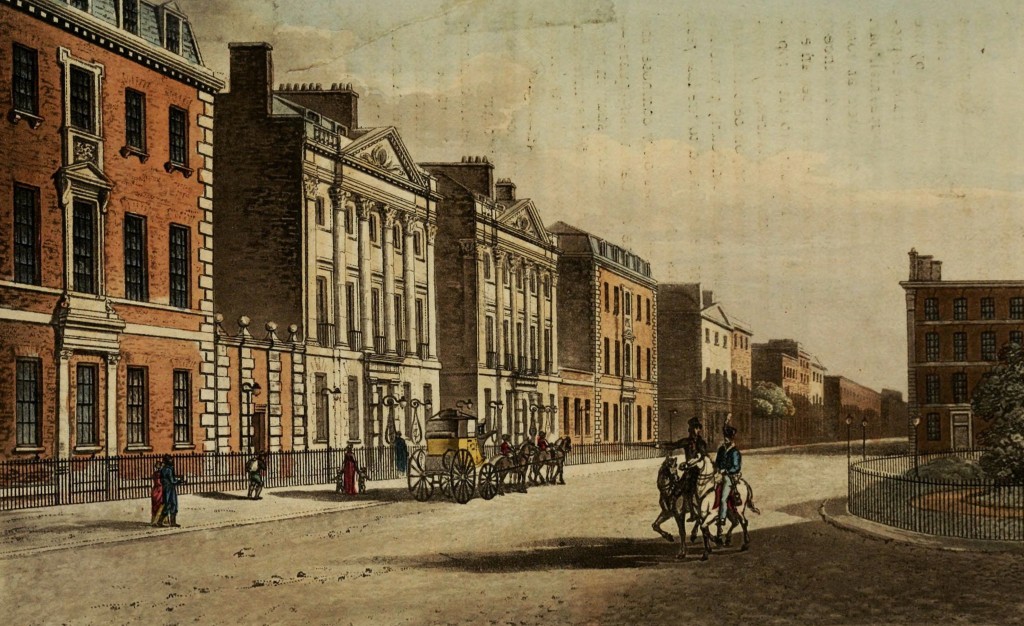Streets of London – Cavendish Square, North Side, London circa 1813

Cavendish Square, North Side, London circa 1813
from The Repository of arts, literature, commerce, manufactures, fashions and politics
“At the beginning of the last century, Marybone, in which Cavendish-square is situated, was a small village nearly a mile distant from any part of the metropolis. It was not till 1715 that a plan was formed for building this square and several streets on the north of Tyburn-road, which has since assumed the name of Oxford-street. The Duke of Chandos, then Earl of Carnarvon, took the whole north side, with the intention of erecting a mansion, with suitable offices, on a most magnificent scale. Lord Harcourt and Lord Bingley purchased ground on the east and west sides, and the rest was let to builders; but the failures occasioned by the South Sea speculation, put a stop to the improvements for some time, so that it was several years before the square was completed.”
“The north side of the square, which is represented in the annexed view, contains but four houses. The two in the middle are of Portland stone, with basements, Corinthian columns, entablatures, pediments, and balustrades. The others, which are of brick, were intended as wings to the palace, planned, as mentioned above, by the Duke of Chandos. The building shewn in the left-hand corner of our engraving, was inhabited by the late Princess Amelia, aunt to the present Majesty. If was afterwards the residence of the Earl of Hopetown, and latterly of Henry Hope, Esq. who died in 1811. This gentleman, a native of Holland, quitted his country at an early period of the French revolution and here enjoyed his immense fortune in security. […]”
“Three houses only compose the west side of Cavendish-square. –That in the center, shut in by a lofty blank wall, is 153 feet in length, and 70 in breadth. It was originally built for Lord Bingley, but has long been the town mansion of the Earl of Harcourt. The remaining sides are occupied by good houses; but these have nothing in their architecture, or appearance, to deserve particular remark. […]”
“In the center of the railed area of Cavendish-square, which has within these few years been planted with shrubs, is a gilt equestrian statue of the conqueror of Culloden […].” The Repository of arts, literature, commerce, manufactures, fashions and politics, 1813.

